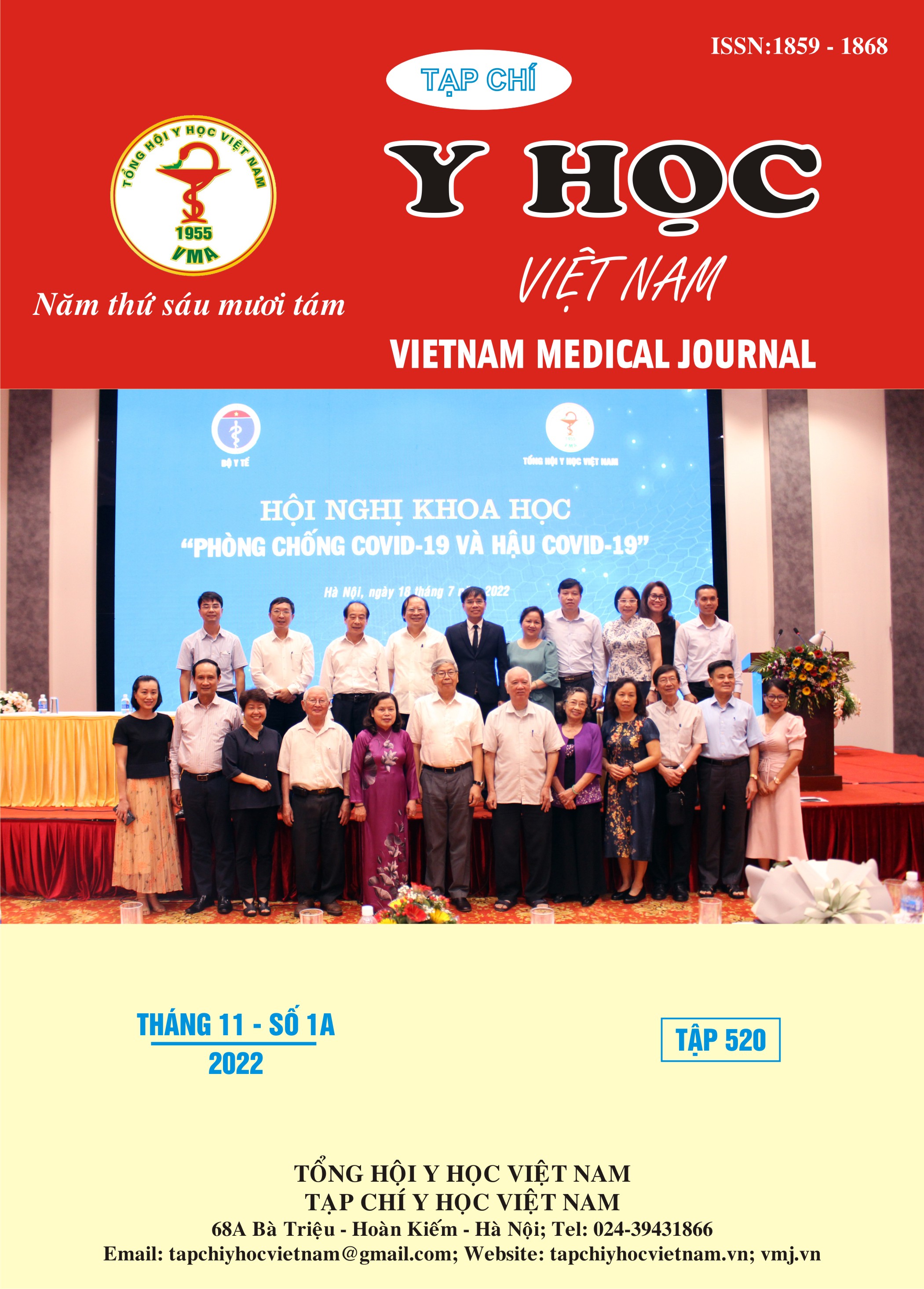CHARACTERISTICS OF vWF FUNCTION TESTS IN PATIENTS WITH VON WILLEBRAND DISEASE AT NATIONAL INSTITUTE OF HEMATOLOGY AND BLOOD TRANSFUSION
Main Article Content
Abstract
Objective: To evaluate functions of von Willebrand factor in patients with hereditary von Willebrand disease in NIHBT. Method: This prospective study included 40 patients with hereditary vWD in NIHBT. Results: Both Collagen-binding activity and von Willebrand activity determined with HaemosIL reduced in all patients and the levels were highest in type 1 and lowest in type 3. vWF CB/Ag and vWF Act/Ag ratio of vWD type 2 were significantly lower compared to type 1 (p<0,001). All patients with vWD type 2 had low ratio of Act/Ag, 20% of them had normal CB/Ag ratio. Activities determined with HaemosIL correlated with collagen-binding (r2 = 0,774, p < 0.0001)
Article Details
Keywords
von Willebrand disease, von Willebrand Activity, Collagen binding
References
2. James PD, Connell NT, Ameer B, et al. ASH ISTH NHF WFH 2021 guidelines on the diagnosis of von Willebrand disease. Blood Adv. 2021;5(1):280-300. doi:10.1182/bloodadvances.2020003265
3. Favaloro EJ, Pasalic L, Curnow J. Laboratory tests used to help diagnose von Willebrand disease: an update. Pathology (Phila). 2016;48(4):303-318. doi:10.1016/j.pathol.2016.03.001
4. Sucker C, Senft B, Scharf RE, Zotz RB. Determination of von Willebrand factor activity: evaluation of the HaemosIL assay in comparison with established procedures. Clin Appl Thromb Off J Int Acad Clin Appl Thromb. 2006;12(3):305-310. doi:10.1177/1076029606291428
5. Flood VH, Gill JC, Friedman KD, et al. Collagen binding provides a sensitive screen for variant von Willebrand disease. Clin Chem. 2013;59(4):684-691. doi:10.1373/clinchem.2012.199000
6. Federici AB. Current and emerging approaches for assessing von Willebrand disease in 2016. Int J Lab Hematol. 2016;38 Suppl 1:41-49. doi:10.1111/ijlh.12540
7. Favaloro EJ. Utility of the von Willebrand factor collagen binding assay in the diagnosis of von Willebrand disease. Am J Hematol. 2017;92(1):114-118. doi:10.1002/ajh.24556


